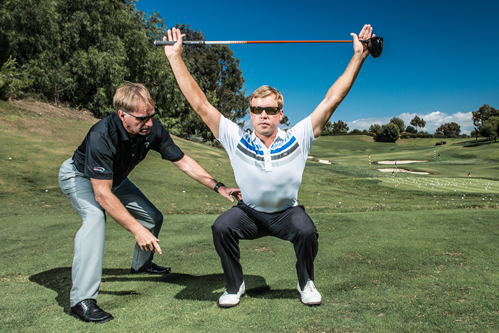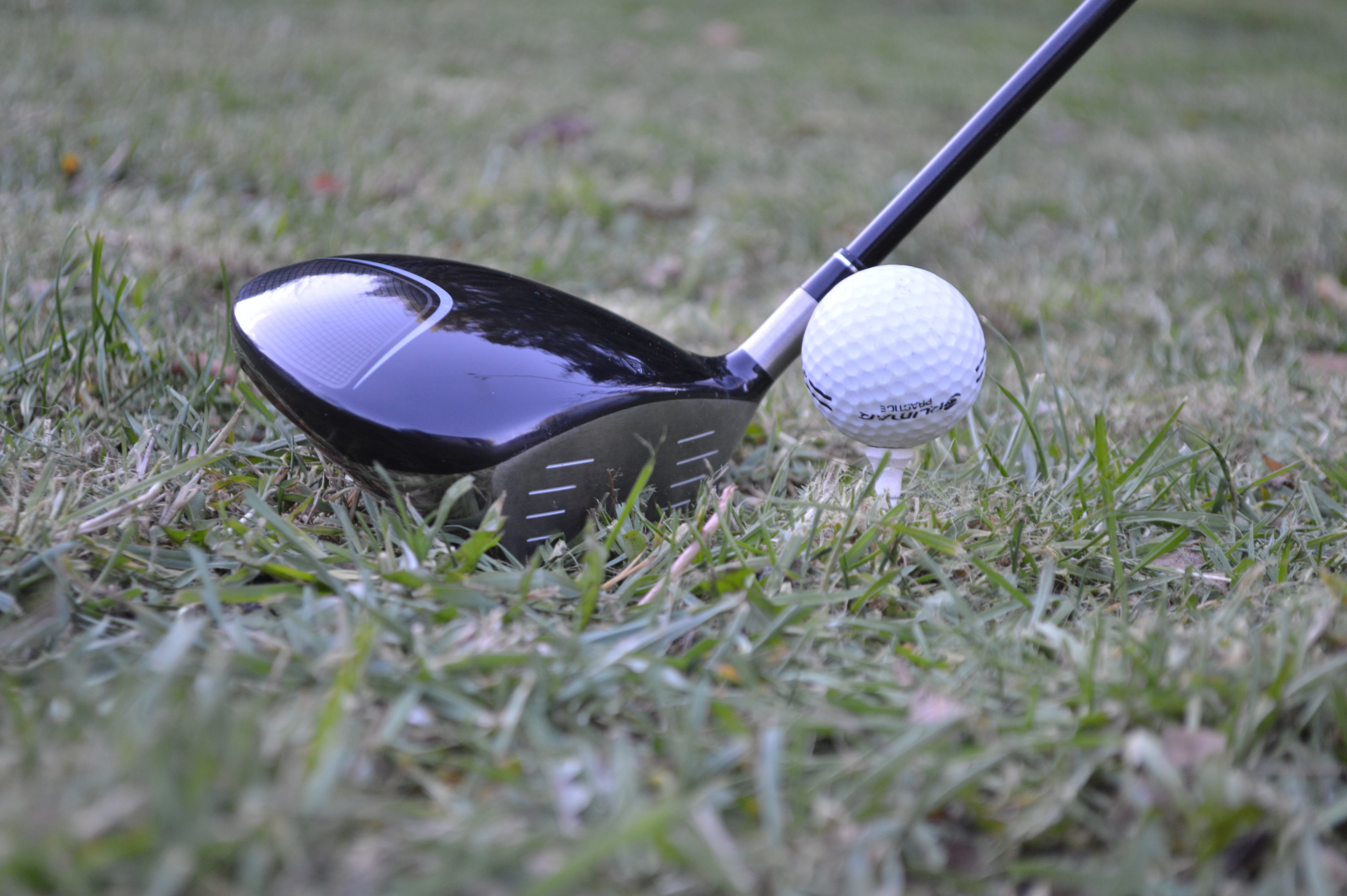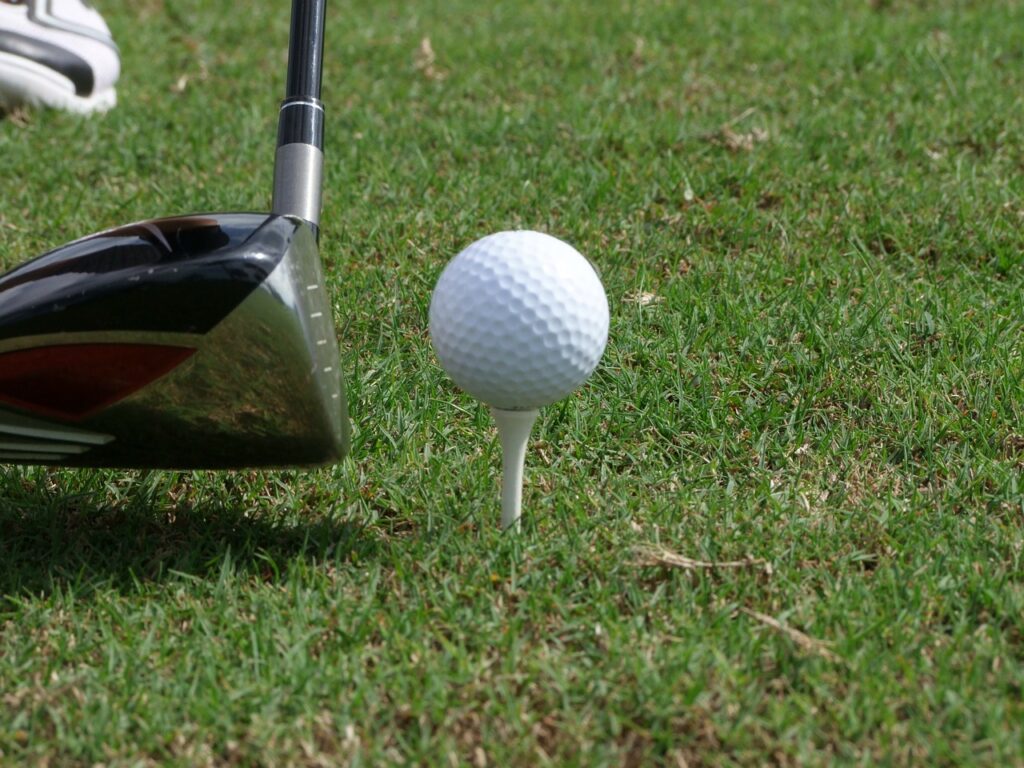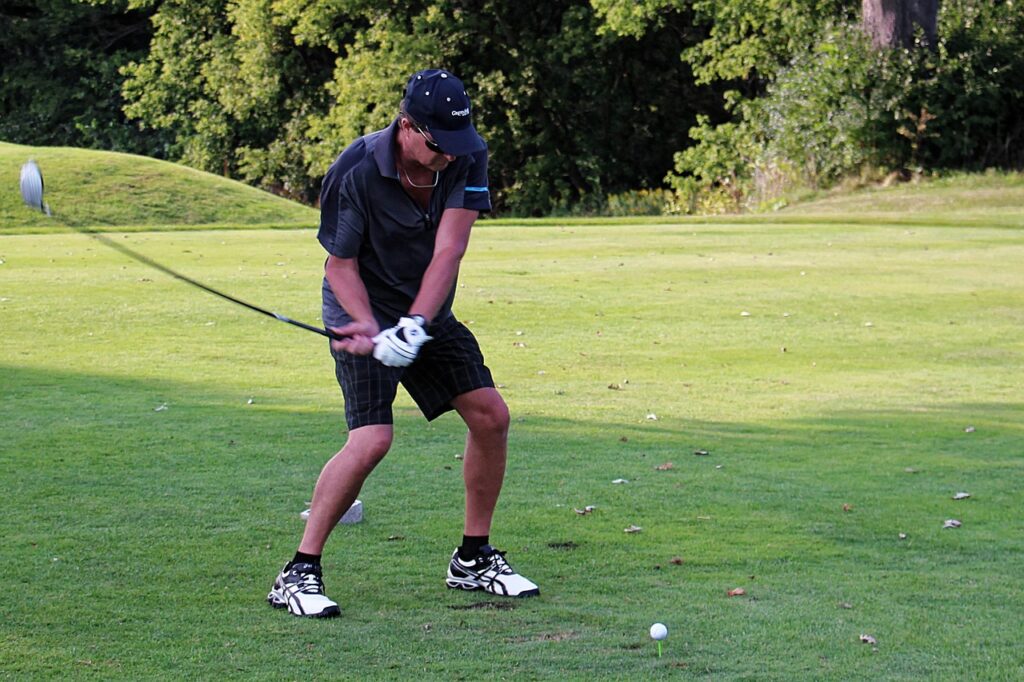In the game of golf, no two people ever have the same golf swing. Each person has their own individual body with its own strengths, flexibility and range of motion. The way one person swings a golf club may not work for another person, even if they are near in body types.
Every golfer has to find the playing style that fits them to help them produce the results that they want. Players that know what is going to happen to the ball when they hit it, and what factors affect that moment of impact can effectively use their body to create the consistent powerful golf swing that they desire.
There is a small caveat though. Limitations or restrictions in said strength, flexibility and functional range of motion (mobility) can all be improved, and really should be to maximise your swing control and power. Plus, when corrected these body restrictions alone can make a massive difference in club head speed, control and power, and therefore accuracy and consistency.

That being said, in my experience, when the body is at optimal many of the other metrics, we use to measure improvement get better as well. Things such as number of fairways hit, number of greens in regulation, total number of putts, and distance carried off the tee -and a number of others.
Ultimatly shaving shots off of your game and lowering your handicap is what it’s all about. After all, at the end of the day it’s the number on the bottom pf your scorecard that counts, and is one metric we use to measure improvements in your game.
But taking the body out of the equation, one thing that can help all golfers make immediate and positive improvements on their game is an understanding of the factors that affect the golf ball at the moment of impact by the golf club.
Knowing what these factors are and how they affect the ball will enable you to understand what happens at the moment of impact and interpret the golf balls flight. When you understand what occurs and why, you can then make small adjustments to your swing and then see the effects on the next shot.

I recommend trying these minor adjustments on the range rather than the course. The flight of the golf ball will tell you whether you were correct in your personal assessment and you made a good change towards a better golf swing.
Plus, you want to do multiple shots with the change you have just affected so you can get enough data points to determine whether that change has been effective.
If you made a change that made the shot worse than before, then go back to the previous swing, hit a few more to get back into that rhythm, before you make a subsequent change and measure its effect.
The moment of impact (ideally the golf club face’s sweet spot hitting the ball) is a combination of four factors that will ultimately determine what direction and how far the ball will travel. The golf ball will react to these factors regardless of how they occur.
The first important factor that affects your golf swing is the angle of the clubface at the moment of impacting the ball. The position of the clubface at the moment of impact is the most important factor influencing the initial direction and the spin of the ball – both side spin angle and backspin.
The clubface must point in the direction of the target you’ve chosen farther down the course. If the clubface is straight and perpendicular to the golf ball at the moment of impact, it will travel straight down the course with little to no side-angle.

N.B. All clubs when struck well/properly will impart backspin. If that backspin occurs in any axis other than vertical, the ball will deviate to the right or the left depending on the angle to the vertical axis. Tour and good players can control the side angle and so, shape their shots by either drawing or fading the ball. When its uncontrolled and large that’s when the ball hooks and slices.
The second factor at the moment of impact is the angle of the clubhead with relation to the golf ball. There is the horizontal angle of impact and vertical angle of impact, both of which are combined to determine the initial direction of the ball and the height of the golf balls flight path.
The horizontal angle of impact determines the initial direction that the ball will travel. The vertical angle of impact will determine how high the ball will fly. Too low or too high and you lose distance in your shot.
Thirdly, the clubface must hit the ball on the sweet spot. The sweet spot is the area on the face of the golf club that will transfer the power of your golf swing to the golf ball. Transferring this power effectively will maximize its potential and carry the ball far and straight down the course (as long as the angle of the clubface and the club head at the moment of impact are good).
Lastly, the fourth factor that is important at the moment of impact, is the club head direction. If the club head is travelling from the inside to the out at impact you will tend to impart side spin toward you. For a right hander that means the ball will draw or hook to the left. And that is made worse if your club face is closed at impact.
The reverse is true too, i.e. the club head travelling from the outside in it will impart side angle spin on the ball away from you. For right handers that will cause the ball to fade or slice, especially of the club face is open.
The speed of your golf swing will determine how much power you transfer to the golf ball and ultimately how far it will go when you hit it on the sweet spot. And it’s not so much the speed or power of the golf swing produced by muscles alone. What you want is the club head speed to be the maximum your body can produce at impact with the ball. So, there is a bit of mechanics involved and not just raw muscle power.
The golf swing is not just picking up a golf club and trying to blast the ball down the course. It is a combination of many factors that if you can interpret, then you can influence by making adjustments to your swing.
Knowing what causes the golf ball to travel as it does will allow you to improve your golf swing and gain distance and accuracy on your shots. However, knowing the cause that produces an effect, and affecting that cause to produce the desired effect are two different things, both of which can be learned over time and with practice.

Main Article Image by Kevin Phillips from Pixabay
Image by Stefan Waldvogel Stefan Waldvogel from Pixabay
Image by Markus Spiske from Pixabay

